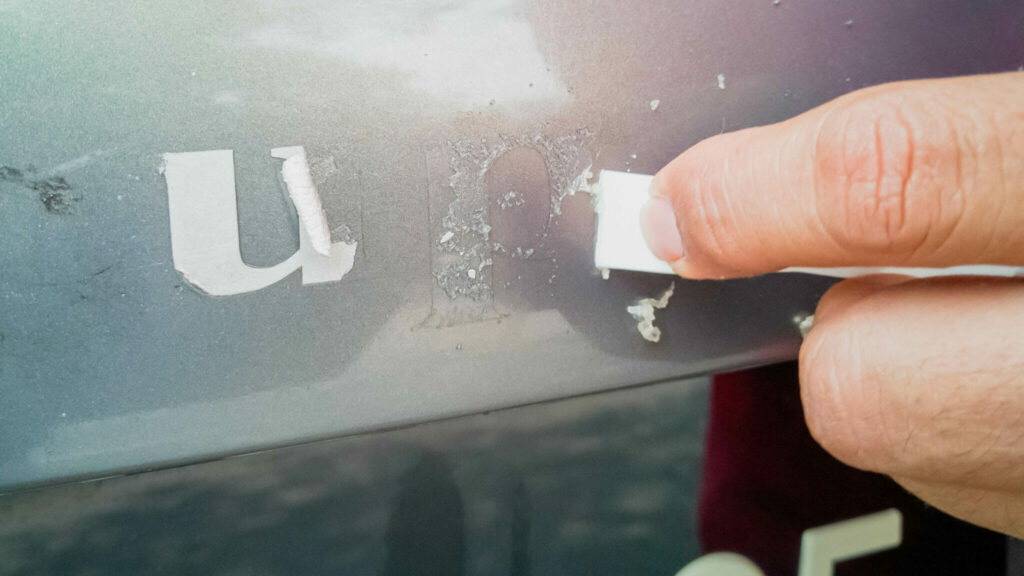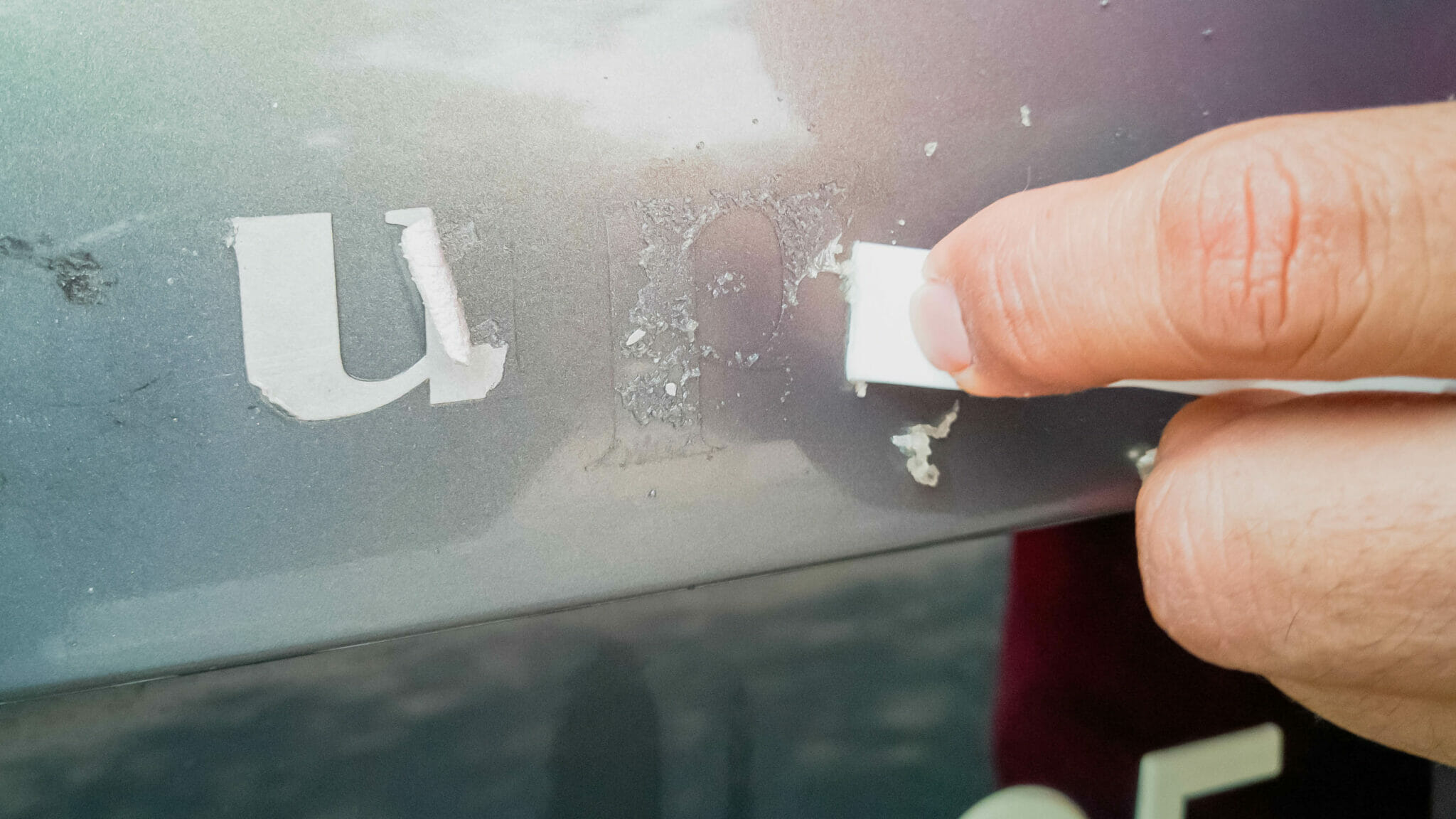
How to Remove the Adhesive from a Sticker: A Comprehensive Guide
Stickers. They’re everywhere. From adorning laptops and water bottles to gracing the corners of product packaging, these adhesive-backed emblems can add personality and branding to just about anything. But what happens when you want to remove one? The residue left behind can be frustrating, sticky, and downright unsightly. Removing sticker adhesive doesn’t have to be a chore. This comprehensive guide will walk you through various methods on how to remove the adhesive from a sticker, ensuring you can restore surfaces to their original, pristine condition.
Understanding Sticker Adhesive
Before diving into the removal techniques, it’s crucial to understand what you’re dealing with. Sticker adhesive is typically composed of polymers designed to create a strong bond with various surfaces. These polymers can react differently to different solvents and temperatures, which explains why some removal methods work better than others.
The type of surface the sticker is applied to also plays a significant role. A delicate surface like painted drywall will require a gentler approach than a robust surface like glass or metal. Choosing the right method is key to avoiding damage.
Essential Tools and Supplies
Gathering your tools and supplies beforehand will make the removal process smoother and more efficient. Here’s a list of items you might need:
- Heat Source: Hair dryer, heat gun (use with caution)
- Solvents: Isopropyl alcohol, white vinegar, Goo Gone, WD-40
- Oils: Cooking oil (vegetable, olive), essential oils (lemon, orange)
- Scrapers: Plastic scraper, credit card, razor blade (use with extreme caution)
- Cloths: Microfiber cloths, cotton balls
- Soaps: Dish soap, all-purpose cleaner
- Water
Methods for Removing Sticker Adhesive
Now, let’s explore several methods for how to remove the adhesive from a sticker. Start with the least aggressive method and gradually increase intensity as needed.
Heat Application
Heat can soften the adhesive, making it easier to peel away. Use a hair dryer on a low setting or a heat gun (carefully!) to warm the sticker and surrounding adhesive. Hold the heat source a few inches away from the surface and move it back and forth. After a minute or two, try peeling the sticker. If it still sticks, apply more heat. This method is particularly effective on plastics and painted surfaces, but always test a small, inconspicuous area first.
Solvent Solutions
Solvents dissolve the adhesive, breaking down its bond with the surface. Here are some common solvents and their applications:
- Isopropyl Alcohol: A readily available solvent that’s effective on many types of adhesive. Apply it to a cloth or cotton ball and gently rub the adhesive until it dissolves. [See also: How to Clean Electronics Safely]
- White Vinegar: A natural and less harsh solvent. Soak a cloth in white vinegar and apply it to the adhesive for several minutes. The vinegar will help loosen the bond.
- Goo Gone: A commercial adhesive remover specifically designed for this purpose. Follow the instructions on the label. It’s generally safe for most surfaces, but always test in an inconspicuous area first.
- WD-40: A multi-purpose lubricant that can also dissolve adhesive. Spray a small amount onto the adhesive, let it sit for a few minutes, and then wipe it away. Be cautious when using WD-40 on porous surfaces as it can leave a residue.
Oil-Based Remedies
Oils can penetrate the adhesive and weaken its grip. Common oils include:
- Cooking Oil: Vegetable oil or olive oil can be surprisingly effective. Apply a generous amount to the adhesive, let it sit for 15-30 minutes, and then wipe away.
- Essential Oils: Lemon and orange essential oils contain natural solvents that can dissolve adhesive. Apply a few drops to the adhesive and let it sit for a few minutes before wiping. The pleasant scent is an added bonus.
Mechanical Removal
Sometimes, a little elbow grease is necessary. Use a plastic scraper, credit card, or razor blade (with extreme caution!) to gently scrape away the adhesive. Hold the scraper at a low angle to avoid scratching the surface. For stubborn adhesive, combine this method with one of the solvent or oil-based remedies.
Specific Surface Considerations
The method you choose will largely depend on the surface you’re cleaning. Here’s a breakdown of considerations for common surfaces:
Glass
Glass is relatively durable, so you can use a wider range of methods. Heat, solvents like isopropyl alcohol or Goo Gone, and a razor blade (carefully!) are all effective options. Be sure to clean the glass thoroughly afterwards to remove any residue.
Plastic
Plastic can be more sensitive to harsh chemicals and heat. Start with warm, soapy water and gentle scrubbing. If that doesn’t work, try isopropyl alcohol or cooking oil. Avoid using abrasive cleaners or harsh solvents that can damage the plastic. Test any solvent on an inconspicuous area first.
Painted Surfaces
Painted surfaces are the most delicate. Avoid using harsh solvents or abrasive cleaners that can strip the paint. Warm, soapy water, followed by gentle application of cooking oil or white vinegar, are often the best options. Use a soft cloth and avoid excessive scrubbing. Always test in an inconspicuous area first.
Metal
Metal is generally durable and can withstand a wider range of methods. Heat, solvents like WD-40 or Goo Gone, and a plastic scraper are all effective. Be sure to clean the metal thoroughly afterwards to prevent corrosion.
Fabric
Removing adhesive from fabric can be tricky. Start by gently scraping away any loose adhesive. Then, try applying isopropyl alcohol or a commercial adhesive remover designed for fabrics. Follow the instructions on the label and test in an inconspicuous area first. You may need to launder the fabric to remove any remaining residue.
Preventative Measures
The best way to deal with sticker adhesive is to prevent it from becoming a problem in the first place. Consider these tips:
- Choose Removable Stickers: When possible, opt for stickers labeled as “removable” or “repositionable.” These stickers use adhesives that are designed to be easily removed without leaving residue.
- Apply Heat Before Removing: Even with removable stickers, applying a little heat before peeling can help soften the adhesive and prevent it from sticking.
- Clean Surfaces Before Applying Stickers: A clean surface will allow the sticker to adhere properly without requiring excessive adhesive.
Troubleshooting Common Problems
Even with the best methods, you might encounter some challenges. Here are some common problems and solutions:
- Stubborn Adhesive: If the adhesive is particularly stubborn, try combining multiple methods. For example, apply heat, then a solvent, and then use a scraper.
- Residue Left Behind: Even after removing the bulk of the adhesive, a sticky residue may remain. Use a clean cloth and a solvent like isopropyl alcohol or Goo Gone to remove the residue.
- Surface Damage: If you accidentally damage the surface, try to repair it as soon as possible. For painted surfaces, touch-up paint can often hide minor scratches.
The Science Behind Adhesive Removal
Understanding the science behind how to remove the adhesive from a sticker involves recognizing the intermolecular forces at play. Adhesives work by creating strong attractions between the adhesive molecules and the surface molecules. These forces can be disrupted by heat, solvents, and mechanical action.
Heat increases the kinetic energy of the molecules, weakening the adhesive bond. Solvents dissolve the adhesive polymers, reducing their ability to stick to the surface. Mechanical action, such as scraping, physically breaks the adhesive bond.
DIY Adhesive Remover Recipes
For the DIY enthusiast, creating your own adhesive remover can be a cost-effective and environmentally friendly option. Here are a couple of recipes to try:
- Baking Soda Paste: Mix baking soda with a small amount of cooking oil to create a paste. Apply the paste to the adhesive, let it sit for 15-30 minutes, and then wipe away. The baking soda acts as a mild abrasive, while the oil helps to dissolve the adhesive.
- Citrus Solvent: Combine equal parts lemon juice and white vinegar. Apply the mixture to the adhesive, let it sit for a few minutes, and then wipe away. The citric acid in the lemon juice helps to dissolve the adhesive.
Professional Adhesive Removal Services
In some cases, removing sticker adhesive can be a job best left to the professionals. This is especially true for delicate surfaces or large areas of adhesive. Professional adhesive removal services have the tools, expertise, and specialized chemicals to safely and effectively remove adhesive without damaging the underlying surface. [See also: When to Hire Professional Cleaning Services]
Conclusion
How to remove the adhesive from a sticker is a skill that can save you time, money, and frustration. By understanding the different types of adhesives, the various removal methods, and the specific considerations for different surfaces, you can confidently tackle any adhesive removal challenge. Remember to start with the least aggressive method and gradually increase intensity as needed. With a little patience and the right tools, you can restore surfaces to their original, pristine condition, free from sticky residue. Whether using heat, solvents, oils, or mechanical methods, the key is to be gentle and persistent. The right approach will ensure the adhesive is gone without damaging the underlying material. So, next time you find yourself battling a stubborn sticker, remember these tips and tricks and reclaim your surfaces!

